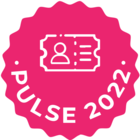Introduction
Effectively driving feature adoption requires more than just tracking usage data; it involves strategically sharing this data and creating tailored campaigns that resonate with your customers. By embedding trending adoption data into customer communications and leveraging targeted enablement resources, you can significantly enhance feature utilization. This article builds on our previous discussions about transforming usage data into actionable insights and prepares you for the next steps in monitoring and analyzing product adoption.
Why does this matter?
Driving feature adoption with embedded data and tailored campaigns is crucial for several reasons:
-
Enhanced engagement: Personalized communications and tailored campaigns ensure that customers receive relevant information, increasing their engagement with your product.
-
Proactive adoption: By proactively sharing adoption data and enablement resources, you can guide customers towards better usage patterns, improving their overall experience.
-
Customer success: Higher feature adoption leads to greater customer satisfaction, retention, and expansion opportunities.
How to get started
Step 1: Embed trending adoption data in communications
-
Identify key metrics: Determine the most relevant adoption metrics to share with customers, such as feature usage trends and engagement levels.
-
Create reports: Use Adoption Explorer and Report Builder to generate reports that highlight these key metrics.
-
Embed data: Automatically embed these reports in Success Snapshots, customer-facing emails, and presentations using Journey Orchestrator.
Step 2: Announce and promote new features
-
Develop messaging strategy: Define the key messages and benefits of the new features, ensuring they align with customer needs and goals.
-
Create compelling content: Develop engaging content for your announcements, including email templates, in-app engagements, and community posts.
-
Launch campaigns: Use Journey Orchestrator and Gainsight PX to automate the delivery of these announcements to the relevant customer segments.
Step 3: Deliver tailored enablement campaigns
-
Segment customers: Identify customer segments based on roles, company goals, and usage patterns to tailor your campaigns effectively.
-
Build campaigns: Create Journey Orchestrator programs that deliver targeted enablement resources, such as webinars, tutorials, and best practice guides.
-
Gather feedback: Collect feedback from customers to measure the effectiveness of the campaigns and identify areas for improvement.
Step 4: Share on-demand enablement resources
-
Develop high-quality resources: Create videos, webinars, tutorials, and user guides that provide valuable information to your users.
-
Proactively share resources: Distribute these resources through your Gainsight community, knowledge base, and regular email updates.
-
Make resources accessible: Ensure that enablement resources are easily accessible by organizing them by feature or topic and creating a search function.
Gainsight features you'll need
-
Gainsight PX or similar tools: To capture detailed usage data and enhance feature tracking.
-
Adoption Explorer: To generate reports on key adoption metrics.
-
Report Builder:To create and embed reports in customer communications.
-
Journey Orchestrator: To automate the delivery of tailored campaigns and embedded data.
-
Success Snapshots: To embed adoption data in presentations and emails.
What’s next?
With embedded data and tailored campaigns driving feature adoption, you're well-equipped to monitor and analyze product adoption effectively. Our next article, "Monitor and analyze product adoption" will guide you through using reports, dashboards, and scorecards to continuously track and improve feature utilization.
Further reading and inspiration
